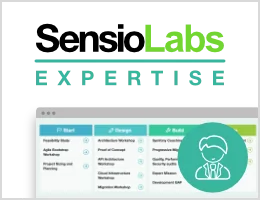How to Color and Style the Console Output
Symfony provides an optional console style to render the input and output of commands in a consistent way. If you prefer to apply your own style, use the utilities explained in this article to show colors in the command output (e.g. to differentiate between important messages, titles, comments, etc.).
Note
By default, the Windows command console doesn't support output coloring. The Console component disables output coloring for Windows systems, but if your commands invoke other scripts which emit color sequences, they will be wrongly displayed as raw escape characters. Install the Cmder, ConEmu, ANSICON, Mintty (used by default in GitBash and Cygwin) or Hyper free applications to add coloring support to your Windows command console.
Using Color Styles
Whenever you output text, you can surround the text with tags to color its output. For example:
1 2 3 4 5 6 7 8 9 10 11
// green text
$output->writeln('<info>foo</info>');
// yellow text
$output->writeln('<comment>foo</comment>');
// black text on a cyan background
$output->writeln('<question>foo</question>');
// white text on a red background
$output->writeln('<error>foo</error>');The closing tag can be replaced by </>, which revokes all formatting options
established by the last opened tag.
It is possible to define your own styles using the OutputFormatterStyle class:
1 2 3 4 5 6 7
use Symfony\Component\Console\Formatter\OutputFormatterStyle;
// ...
$outputStyle = new OutputFormatterStyle('red', '#ff0', ['bold', 'blink']);
$output->getFormatter()->setStyle('fire', $outputStyle);
$output->writeln('<fire>foo</>');Any hex color is supported for foreground and background colors. Besides that, these named colors are supported:
black, red, green, yellow, blue, magenta, cyan, white,
gray, bright-red, bright-green, bright-yellow, bright-blue,
bright-magenta, bright-cyan and bright-white.
Note
If the terminal doesn't support true colors, the given color is replaced by
the nearest color depending on the terminal capabilities. E.g. #c0392b is
degraded to #d75f5f in 256-color terminals and to red in 8-color terminals.
And available options are: bold, underscore, blink, reverse
(enables the "reverse video" mode where the background and foreground colors
are swapped) and conceal (sets the foreground color to transparent, making
the typed text invisible - although it can be selected and copied; this option is
commonly used when asking the user to type sensitive information).
You can also set these colors and options directly inside the tag name:
1 2 3 4 5 6 7 8 9 10 11 12 13 14
// using named colors
$output->writeln('<fg=green>foo</>');
// using hexadecimal colors
$output->writeln('<fg=#c0392b>foo</>');
// black text on a cyan background
$output->writeln('<fg=black;bg=cyan>foo</>');
// bold text on a yellow background
$output->writeln('<bg=yellow;options=bold>foo</>');
// bold text with underscore
$output->writeln('<options=bold,underscore>foo</>');Note
If you need to render a tag literally, escape it with a backslash: \<info>
or use the escape()
method to escape all the tags included in the given string.
Displaying Clickable Links
Commands can use the special <href> tag to display links similar to the
<a> elements of web pages:
1
$output->writeln('<href=https://symfony.com>Symfony Homepage</>');If your terminal belongs to the list of terminal emulators that support links you can click on the "Symfony Homepage" text to open its URL in your default browser. Otherwise, you'll see "Symfony Homepage" as regular text and the URL will be lost.

